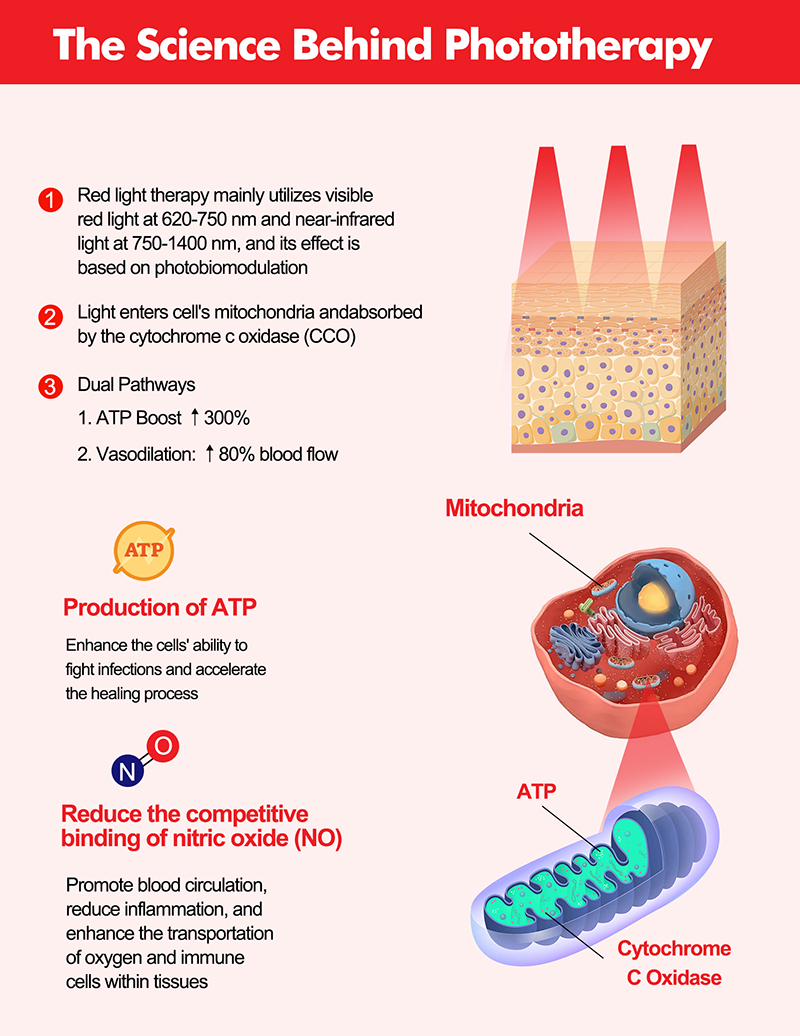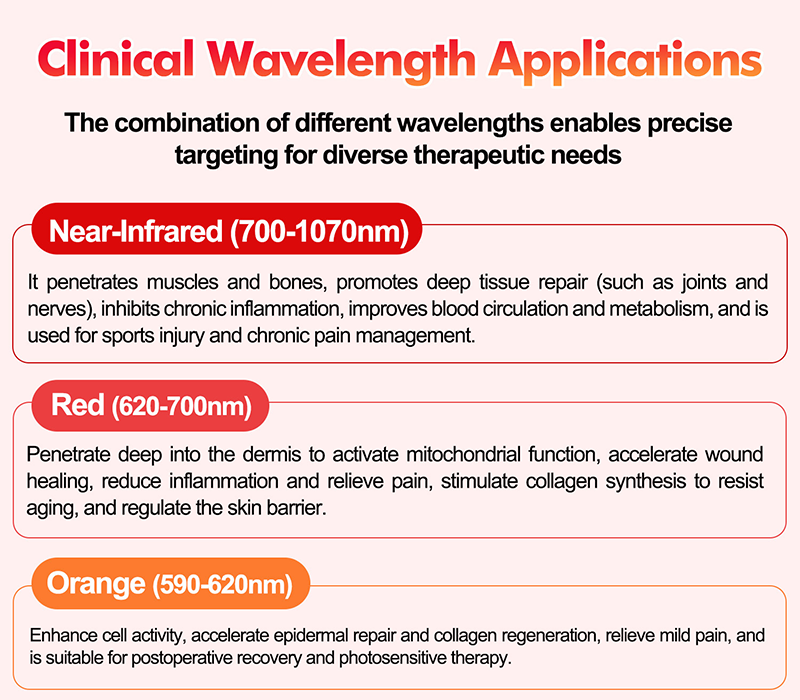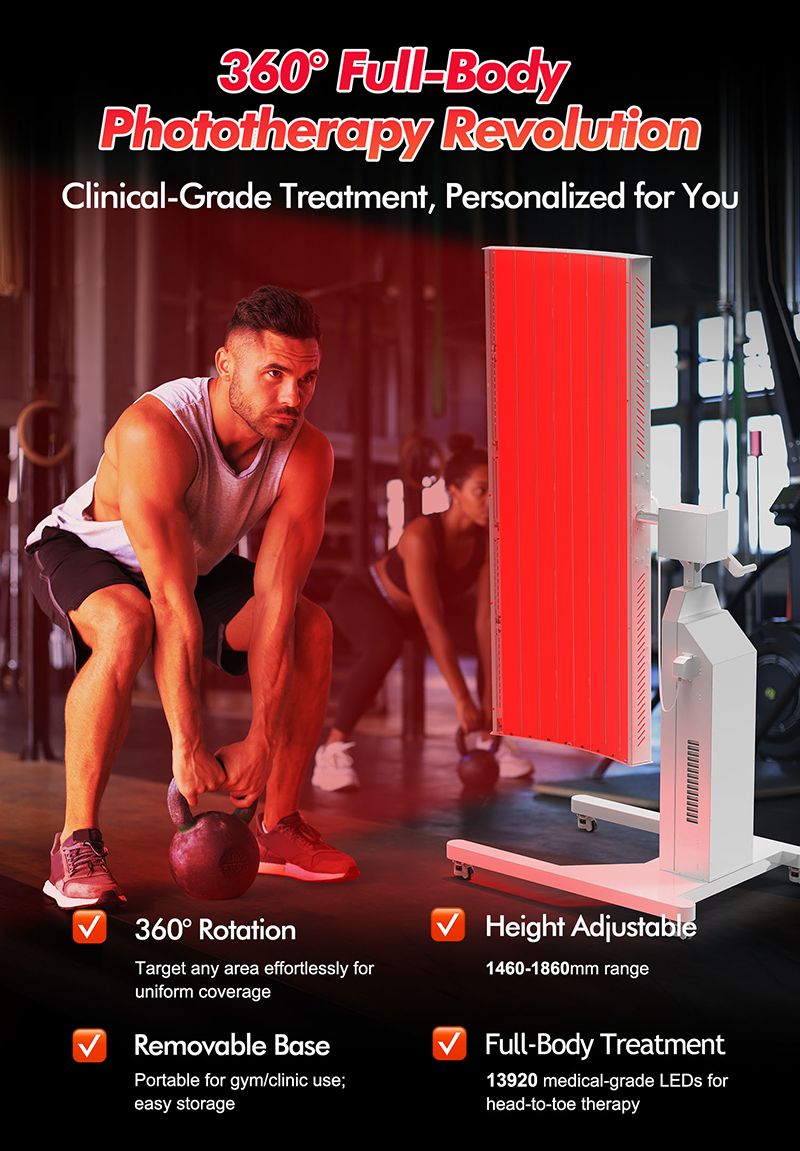The Science of Light: How Does Light Benefit Your Body?
 Suyzeko
Suyzeko
 Oct 28,2025
Oct 28,2025

The Science of Light: How does light benefit your body?
Introduction
In recent years, LED light therapy has emerged as a groundbreaking skincare and wellness trend, capturing the attention of beauty enthusiasts and medical professionals alike. The proof is in the search data: terms like "Red Light Therapy Belt" have exploded with a 3,500% growth in search volume, while queries for "Red Light Eye Therapy" have seen a significant 917% increase . This isn't just a passing fad; it's a shift towards non-invasive, science-backed treatments for skin health and overall well-being.
Once a technology developed by NASA for plant growth experiments in space with potential wound-healing applications, LED light therapy has now blossomed into a versatile tool available in dermatology clinics and home devices . But with so many colors and claims, what truly are the benefits? This guide will illuminate the science behind the different wavelengths—red, near-infrared, blue, yellow, and green—and how they can help you achieve healthier skin and body.

The Science Behind the Glow: How LED Light Therapy Works
At its core, LED light therapy, also known as photobiomodulation (PBM), uses specific wavelengths of light to interact with our skin cells . Unlike the sun's rays or the UV lights used in manicures, therapeutic LED light does not contain ultraviolet radiation, making it a safe treatment for regular use without the risk of UV damage .
The magic happens within our cells. When skin cells absorb these light particles (photons), a natural biological reaction is triggered. The primary target is often the mitochondria, the "powerhouse" of the cell . Here, light energy, particularly from red and near-infrared wavelengths, is thought to stimulate the mitochondria to produce more of the fundamental energy currency of the cell, adenosine triphosphate (ATP) . With more energy, cells can function more efficiently, leading to better repair, rejuvenation, and regulation.
Each color of light has a different wavelength, which determines how deeply it penetrates the skin and what specific skin concern it targets .

Decoding the Spectrum: Benefits by Color
1. Red Light (630–670 nm): The Anti-Aging & Repair Powerhouse
Red light, with a wavelength of approximately 630–670 nanometers (nm), is one of the most popular and extensively researched options . Its long wavelength allows it to penetrate into the skin's dermis and even subcutaneous tissue, reaching a depth of up to about 5 mm .
Key Benefits:
Collagen Boost & Wrinkle Reduction: By stimulating fibroblasts, red light promotes the production of collagen and elastin, the proteins responsible for skin's firmness and elasticity. This helps reduce the appearance of fine lines and wrinkles and improves skin texture .
Enhanced Wound Healing: It accelerates tissue repair by increasing blood circulation and reducing inflammation, making it beneficial for healing skin wounds, surgical incisions, and conditions like diabetic foot ulcers .
Anti-Inflammatory Effects: Red light can help calm skin inflammation associated with conditions like psoriasis and general skin redness .
Hair Growth: Clinical studies support its use for treating androgenetic alopecia. It increases hair density and thickness by energizing hair follicle cells .
Clinical Parameters: For anti-aging and skin repair, clinical consensus recommends a wavelength of (630±10) nm, a power density of 40–80 mW/cm², and an energy density of 40–100 J/cm² .
2. Near-Infrared Light (NIR): The Deep Soother
Though invisible to the human eye, near-infrared light (NIR) is a powerful therapeutic tool. It penetrates even deeper than red light, reaching into muscles, joints, and deep inflammatory tissues .
Key Benefits:
Muscle and Joint Pain Relief: Its deep-penetrating ability makes it excellent for soothing minor aches, pains, and inflammation in muscles and joints, which explains the trending popularity of "Red Light Therapy Belts" for targeted pain relief .
Accelerated Recovery: By promoting tissue repair and reducing inflammation at a deep level, NIR is used in sports medicine and physical therapy to support injury recovery .
Cellular Energy and Detoxification: Like red light, it boosts cellular energy (ATP) and is believed to help repair inflamed tissues by expanding blood vessels, which aids in clearing out waste products .
3. Blue Light (415–417 nm): The Acne Buster
With a shorter wavelength that penetrates only about 1 mm into the skin, blue light primarily targets the epidermis, where acne-causing bacteria reside .
Key Benefits:
Fights Acne-Causing Bacteria: Blue light's primary function is antibacterial. It is absorbed by porphyrins, compounds produced by the C. acnes bacteria. This reaction generates free radicals that effectively destroy the bacteria from within, reducing breakouts .
Regulates Oil Production: It can help calm overactive sebaceous glands, leading to less oily skin .
Clinical Parameters: For treating mild-to-moderate inflammatory acne, experts recommend a wavelength of (417±10) nm, a power density of 20–40 mW/cm², and an energy density of 20–50 J/cm². It can be used alone or in sequence with red light for enhanced results .
4. Yellow Light (590–595 nm): The Soothing Calm
Yellow light, with a wavelength around 590–595 nm, penetrates to a depth between that of blue and red light, primarily affecting the epidermis and upper dermis .
Key Benefits:
Reduces Redness and Sensitivity: Yellow light is renowned for its ability to calm and soothe the skin. It is highly effective at reducing redness, flushing, and inflammation associated with conditions like rosacea, seborrheic dermatitis, and general sensitivity .
Strengthens the Skin Barrier: It aids in repairing a compromised skin barrier, making it ideal for those with reactive or stressed skin .
Brightens Skin Tone: Some evidence suggests it can help inhibit melanin production and promote its metabolism, contributing to a more even and radiant complexion, useful for managing conditions like melasma .
Clinical Parameters: For treating conditions like melasma and photoaging, a wavelength of (590±10) nm, power density of 20–40 mW/cm², and energy density of 20–48 J/cm² are recommended .
5. Green Light: The Even-Toner
While research on green light is less extensive than on red or blue, it has found its niche in skincare regimens.
Key Benefits:
Reduces Hyperpigmentation: Green light is believed to help suppress melanocyte activity, which can lead to a reduction in dark spots and sun damage, resulting in a more uniform skin tone .
Calms and Refreshes: It has a mild calming effect on the skin and can help reduce the appearance of dark circles and puffiness, contributing to a refreshed look


How to Incorporate LED Light Therapy into Your Routine
You can experience LED therapy through professional treatments at dermatology clinics or medispas, or by using an at-home device.
Professional Treatments: Offered in clinics and medical spas, these sessions use high-powered devices. A course of treatments is often recommended for optimal results. For instance, professional treatments for acne may be recommended 2-3 times per week for 8-12 sessions .
At-Home Devices: These include masks, wands, and belts. While more convenient, they have lower output power, so they require more frequent and longer-term use to see results . Consistency is key.
A Note on Safety: LED light therapy is generally very safe for most people . The most common side effects are mild and temporary, such as a feeling of warmth or slight dryness . It is crucial to always use protective goggles during treatment. If you have a specific medical condition, are pregnant, or have photosensitivity, consult your doctor before starting any new light therapy regimen .

The Future is Bright
LED light therapy is a compelling fusion of science and skincare. From the collagen-boosting power of red light to the bacteria-fighting prowess of blue and the soothing touch of yellow, this technology offers a targeted, evidence-backed approach to skin health and overall wellness. As research continues to evolve and technology becomes even more sophisticated, the potential for personalized light therapy regimens is immense. By understanding the unique benefits of each wavelength, you can make an informed choice and find the perfect light to illuminate your path to better health.



 Home
Home











